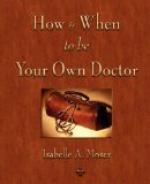Since the large intestine is also an organ that removes moisture and water-soluble minerals from the food and moves them into the blood stream, when the large intestine is lined with putrefying undigested food waste, the toxins of this putrefaction are also steadily moved into the bloodstream and place an even greater burden on the liver and kidneys, accelerating their breakdown, accelerating the aging process and contributing to a lot of interesting and unpleasant symptoms that keep doctors busy and financially solvent. I’ll have quite a bit more to say about colon cleansing later.
The Progress Of Disease: Irritation, Enervation, Toxemia
Disease routinely lies at the end of a three-part chain that goes: irritation or sub-clinical malnutrition, enervation, toxemia. Irritations are something the person does to themselves or something that happens around them. Stresses, in other words.
Mental stressors include strong negative emotional states such as anger, fear, resentment, hopelessness, etc. Behind most diseases it is common to find a problematic mind churning in profound confusion, one generated by a character that avoids responsibility. There may also be job stress or ongoing hostile relationships, often within the family.
Indigestible foods and misdigestion are also stressful irritations, as are mild recreational poisons such as “soft” drugs, tobacco and alcohol. Opiates are somewhat more toxifying, primarily because they paralyze the gut and induce profound constipation. Stimulants like cocaine and amphetamines are the most damaging recreational drugs; these are highly toxic and rapidly shorten life.
Repeated irritations and/or malnutrition eventually produce enervation. The old-time hygienists defined enervation as a lack of or decline in an unmeasurable phenomena, “nerve energy.” They viewed the functioning of vital organs as being controlled by or driven by nerve force, sometimes called life force or elan vital. Whatever this vital force actually is, it can be observed and subjectively measured by comparing one person with another. Some people are full of it and literally sparkle with overflowing energy. Beings like this make everyone around them feel good because they somehow momentarily give energy to those endowed with less. Others possess very little and dully plod through life.
As vital force drops, the overall efficiency of all the body’s organs correspondingly decline. The pancreas creates less digestive enzymes; the thymus secretes less of its vital hormones that mobilize the immune system; the pituitary makes less growth hormone so the overall repair and rebuilding of cells and tissues slows correspondingly; and so forth. It does not really matter if there is or is not something called nerve energy that can or cannot be measured in a laboratory. Vital force is observable to many people. However, it is measurable by laboratory test that after repeated irritation the overall functioning of the essential organs and glands does deteriorate.




